“Consumers are using the Internet to take their health into their own hands,” at least for 1 in 2 U.S. consumers engaging in some sort of preventive health care activity online in mid-2022.
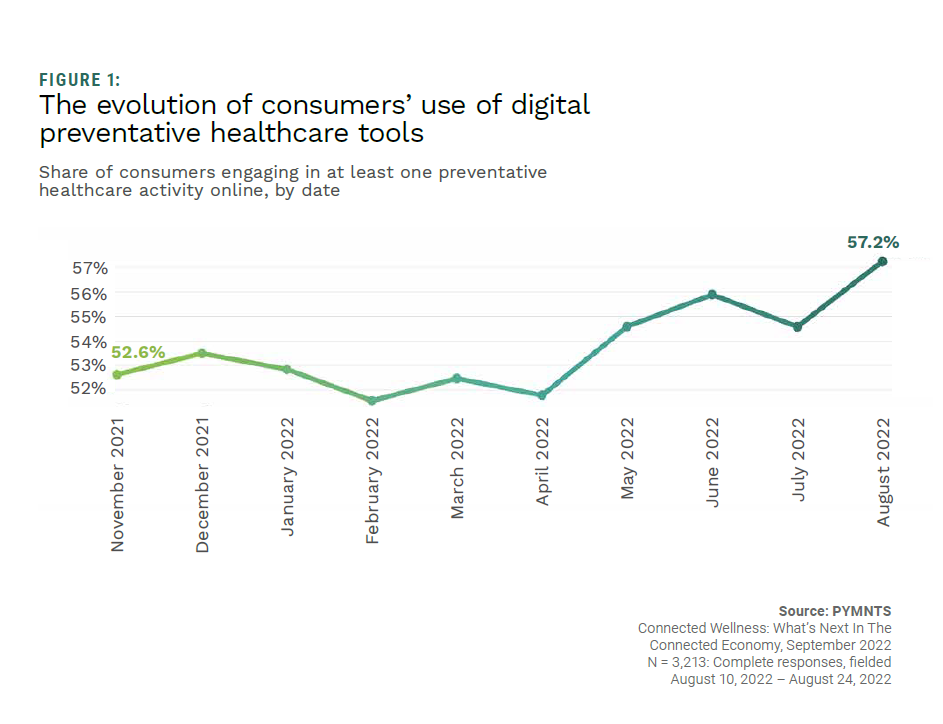
The new report on Connected Wellness from PYMNTS and Care Credit profiles American health consumers’ use of digital tools for health care promotion and disease prevention.
The bottom-line here is that the most connected 10% of consumers were 1.65 times more likely to be engaged in preventive digital health activities than the average person.
Peoples’ engagement with digital health technologies ratcheted up by about 10% (5 percentage points) since November 2021, the first line chart from the report illustrates.
That represents 148 million U.S. consumers, dominated by more Gen z, millennials and bridge millennials more like to adopt digital health than Gen X and Baby Boomers.
We’re at a time when it’s crucial to connect the dots between peoples’ physical health, their financial health, and their mental health. Some people are finding that online and digital health tools can help them manage their health as they face the stress of strained home finances and paycheck-to-paycheck living.
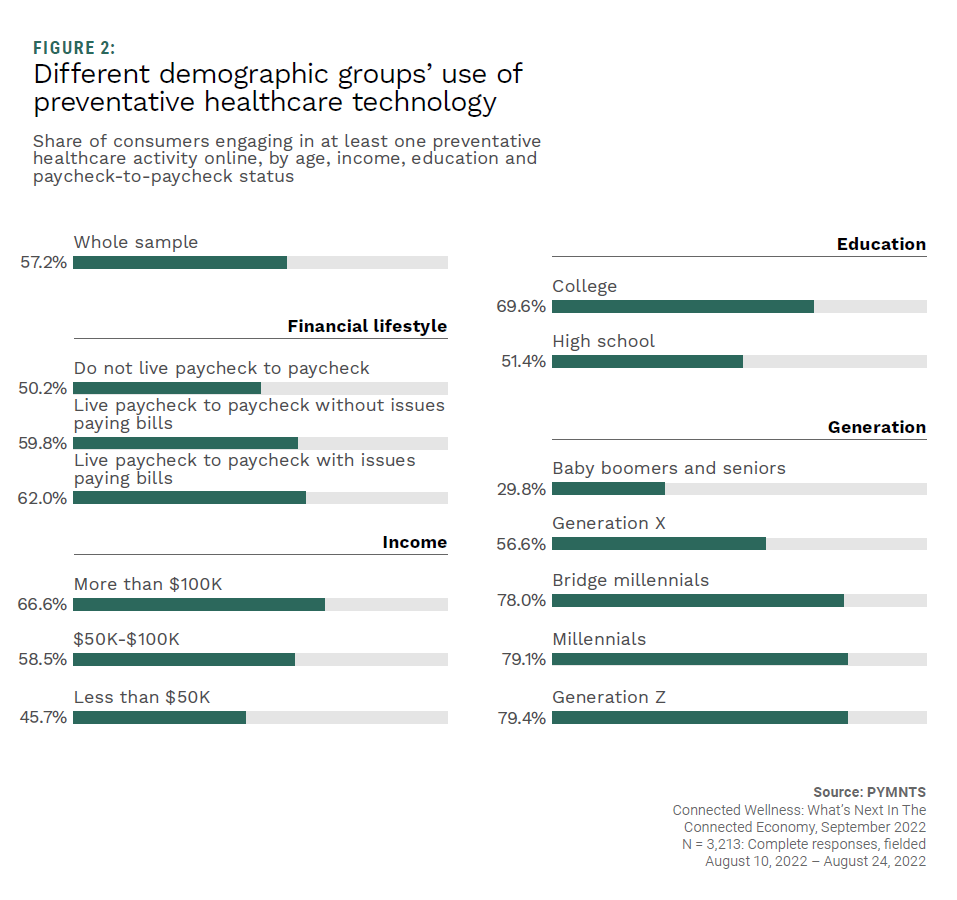
Contrasting the overall 57% of consumers using digital tech for prevention:
- More people with tighter home finances are engaging with at least one online health care activity, with roughly 60% living paycheck-to-paycheck versus 50% more financially secure
- Two-thirds earn over $100K a year, and
- 7 in 10 have college educations.
The third bar chart (labeled Figure 3) shows the share of consumers engaging with online digital health tools by frequency and date, starting with November 2021.
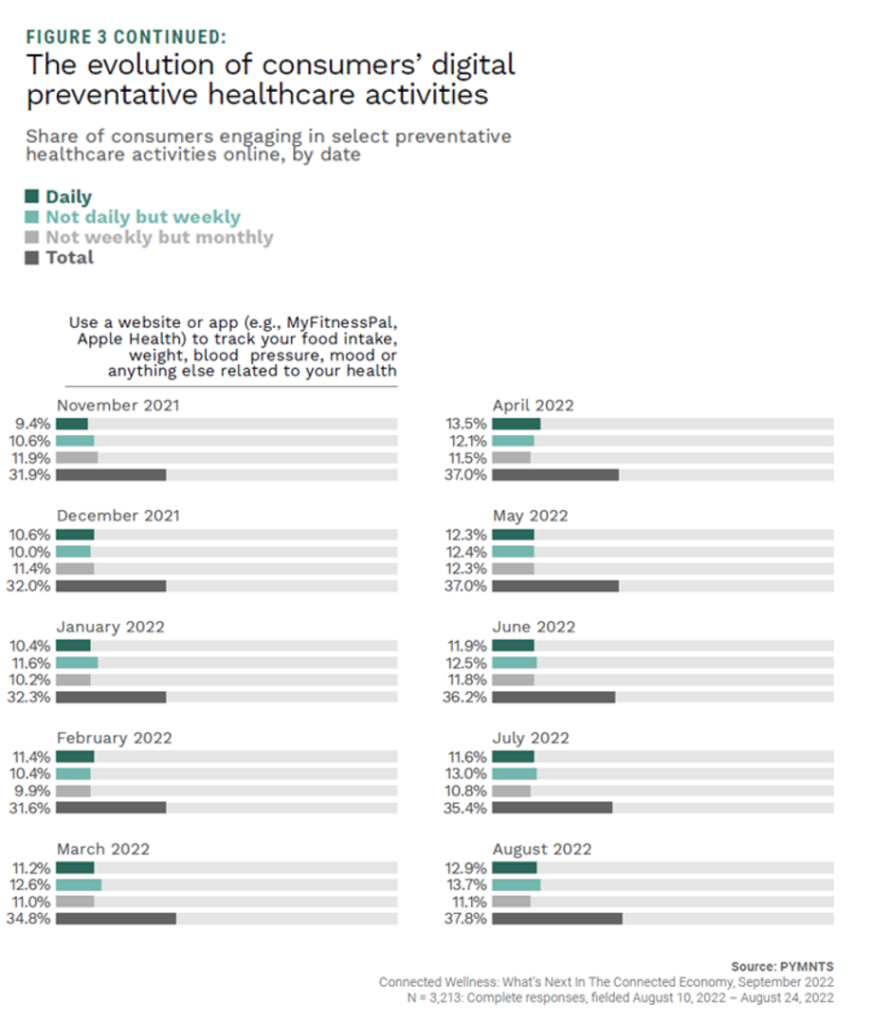
Note that those people using digital health tech on a daily basis increased from 9.4% of folks in November 2021 to 12.9% in August 2022, and on a weekly basis from 10.6% to 13.7%.
More granularly,
- 15.7% of consumers were using a digital health tool to share exercise or health progress on social media to keep health goals on track at least weekly in November 2021, and by August 2022, that grew to 20.9% of people, and,
- 26.6% of consumers were using a website or app to track food intake, weight, blood pressure, or other health metrics by August 2022 at least weekly, up from 20% in November 2021.
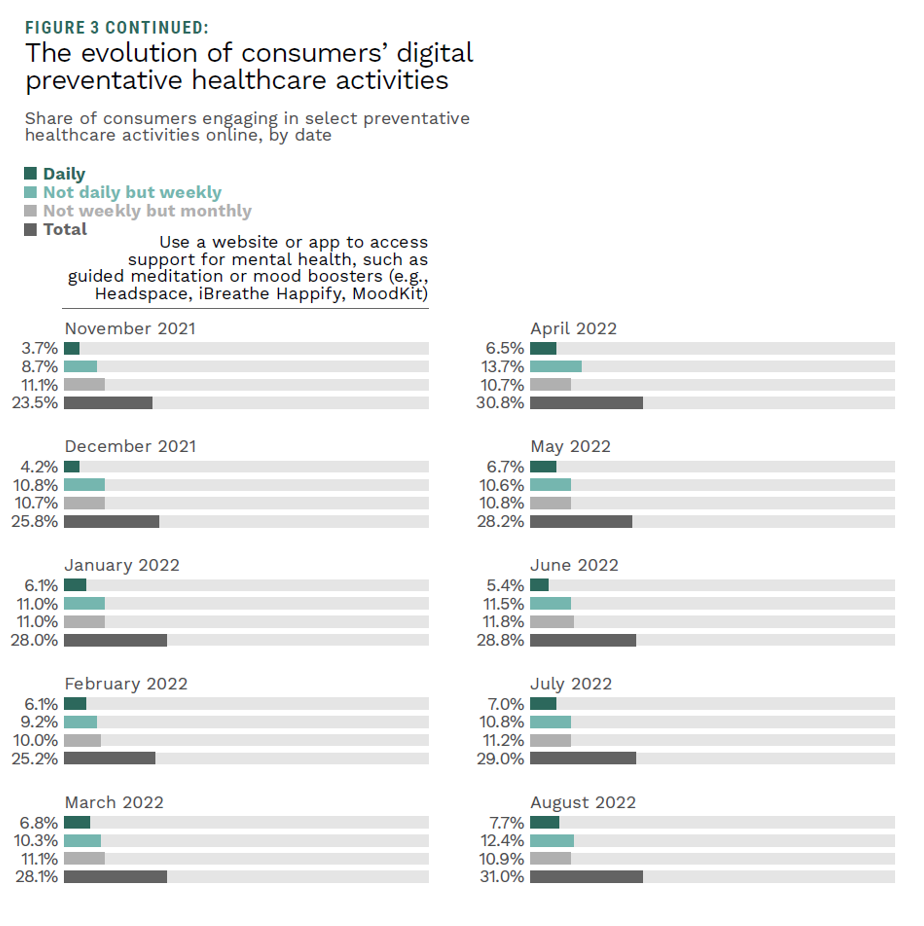
The most commonly used online health activity captured in this research was using a website or app to support mental health, such as guided meditation or mind boosters like Calm, Headspace or MoodKit.
Note the growing adoption of using digital tools to address one’s mental health, expanding in use at least weekly from 12.4% of U.S. consumers in November 2021 to 20.1% in August 2022.
FYI, the folks at PYMNTS have been researching various threads and consumer perspectives on the “ConnectedEconomy,” this wellness report being one of several in the series of peoples’ growing digital lives.
The consumer survey for the study was conducted in August 2022 among 3,213 U.S. adults.
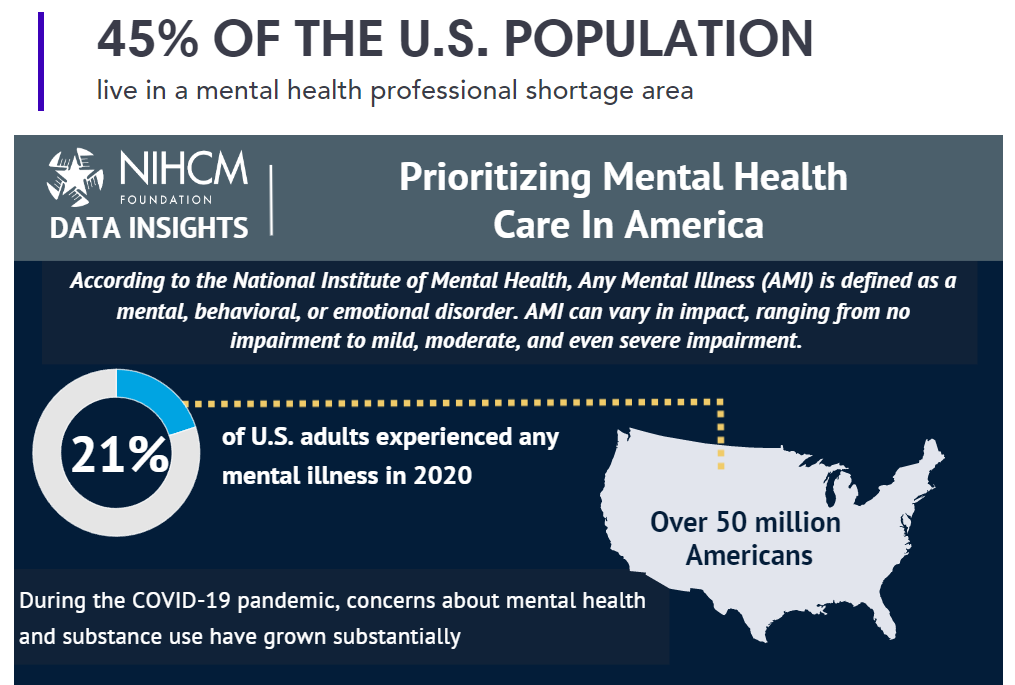
Health Populi’s Hot Points: It’s Mental Health Awareness Week: the NIHCM has assembled data to update our understanding of the mental health crisis in the U.S., shared here in its top-line.
Among NIHCM’s recommended strategies to make mental health more accessible are to try online or digital therapy, or use a peer-support hotline service, among other opportunities to expand therapy to people who and where they need it.
Clearly, more and more health citizens are taking advantage of those virtual mental health services, shown by the PYMNTS research.
More on this tomorrow in Health Populi to honor and advocate for Mental Health Awareness Week.


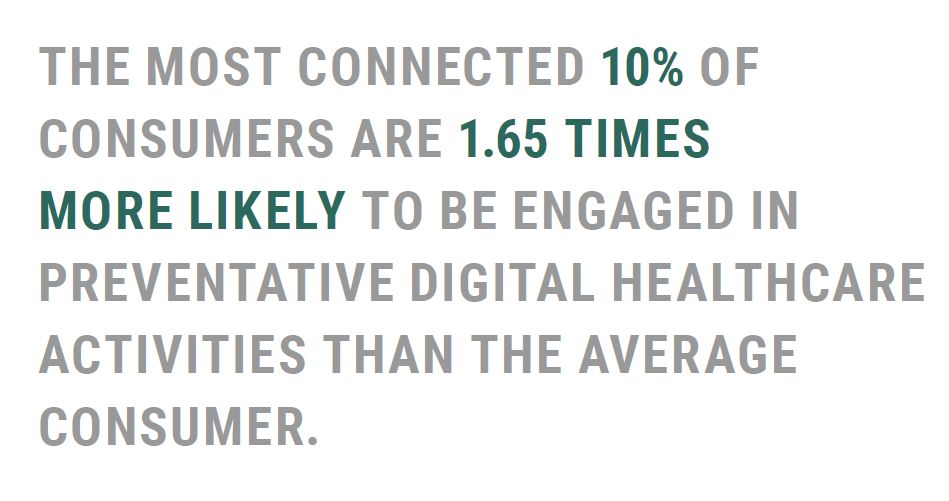


 Thank you, Jared Johnson, for including me on the list of the
Thank you, Jared Johnson, for including me on the list of the  I am so grateful to Tom Lawry for asking me to pen the foreword for his book, Health Care Nation,
I am so grateful to Tom Lawry for asking me to pen the foreword for his book, Health Care Nation,  Thanks to Feedspot for naming this blog, Health Populi, as a
Thanks to Feedspot for naming this blog, Health Populi, as a